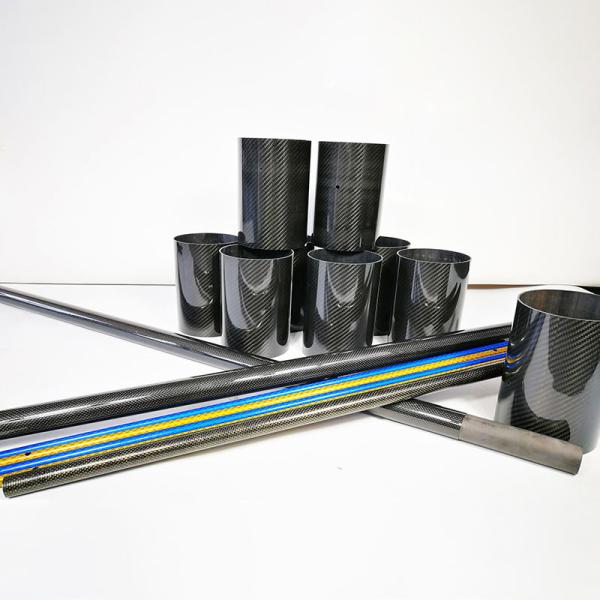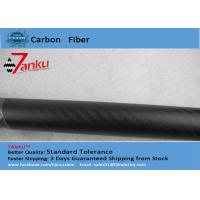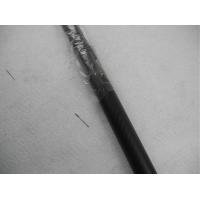Shanghai Lijin focuses on the Carbon Fiber industry and offers
carbon fiber tubes, plates, and aluminum CNC services.
Being experienced in the carbon fiber applications for over 7
years, Shanghai Lijin manages customized production according to
various industry standards. Shanghai Lijin started to keep in stock
for some standard
sized and frequently ordered tubes and plates. This enables
Shanghai Lijin to make prompt delivery. Not only
can Shanghai Lijin complete mass production orders in short period,
we can even ship normal sample, prototype orders of Carbon Fiber
Plate CNC parts in just SEVEN days after order confirmation when
the
drawings are available. Shanghai Lijin is dedicated to solve any
technical points during the production and new item developing to
ensure the quality.
Carbon Fiber tube production is Shanghai Lijin’s core business and
occupies 70% of our turnover.
The carbon fiber tubes Shanghai Lijin mainly produce is
table-rolled and oven thermoset. The tubes can be Full Carbon or
Carbon Fiber and Fiberglass composite, depending on the
application, weight limit,mechanical
strength and surface requirement.Shanghai Lijin offers top quality
ROUND carbon fiber tubes. The general OD tolerance we achieve is
+/-0.10mm and it can be even +/-0.05mm after our special surface
process.
The maximum length of the tube can be 5500mm.
Besides the traditional table-rolled carbon fiber tubes, Shanghai
Lijin also offers REAL Filament wound carbon fiber tubes,which are
widely used for mechanical strength like auto driving shaft,
antennas, even for military
applications. The filament wound carbon tubes are wound at a
certain angle like 30 or 45 degree. We invested the new production
line from Jun 2013 and this increases Shanghai Lijin’s advantage in
the carbon
fiber tube industry. There are just a few real filament wound
carbon fiber tube manufacturers in domestic
China and we are one of them.
Since the rapid growth of UAV in the international market, instead
of the standard plane like Phantom from DJI, RC fans are getting
more interested in the customized multicopters. As carbon fiber is
the most preferred
material for UAV, Carbon Fiber CNC parts demand is increasing.
Shanghai Lijin sticks to offering OEM service for the international market, fine quality and prompt delivery.To
ensure the thickness tolerance +/-0.10mm and minimum warp of the
Carbon Fiber plates that are used for the cutting, Shanghai lijin
execute high standard to
the plate production. For the normal thicknesses including 1.0mm,
1.2mm, 1.5mm, 2.0mm, 2.5mm, 3.0mm,
Shanghai Lijin keeps regular stock, to make sure the raw material
will be available for cutting immediately when order is
firmed.Experienced engineers are in Shanghai Lijin’s office ready
to deal with different types of
drawings from customers. No matter the drawing formats are .DWG,
.DXF that can be edited by AutoCAD
and used directly for production, 3D drawings like .IGS, or even
draft drawings, our staff can do adjustment and change to customer’s idea. Our engineers are also good at English
communication, Email and IM is easy
for them. Editing drawings for customers is FREE* of charge.
Shanghai Lijin is having several professional CNC machines for
carbon fiber cutting and drilling, with the capacity of cutting
20-50pcs standard full sized plate per day. The carbon fiber
chassis general cutting tolerance Shanghai Lijin offer is
+/-0.02mm. The
special designed cutting solution ensures the smoothness of the
cutting edge.
‘Customers’ Persuit for Change, Lijin’s Motivation for Growth’,
Shanghai Lijin takes customers’ demand for center, enhances the
customer satisfaction, and grows with customer.

















